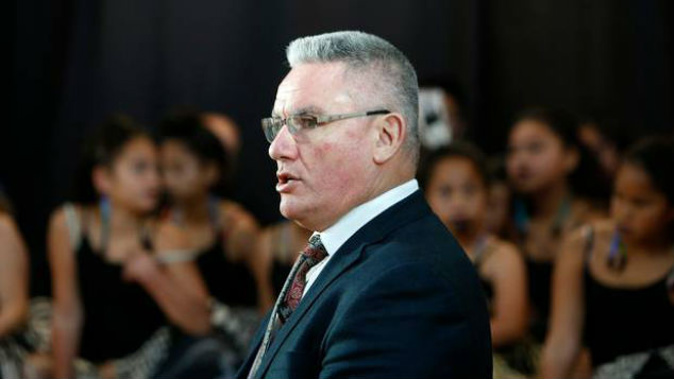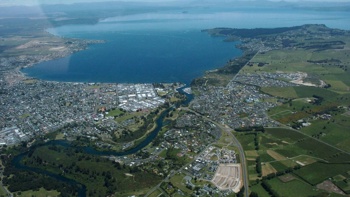Labour's double-bunking policy
The idea of squeezing two prisoners into one cell was introduced by Judith Collins, who ordered existing cells to be converted in order to deal with a burgeoning prison population. Now the new government has decided to actually build the new cells with double-bunks. About two-thirds of prisoners at the new Waikeria jail will be sharing a cell. According to Laura Walters, double-bunking methods have "been associated with rapes, riots, and assaults on other prisoners, and prison staff."
It has now been pointed out that the small size of the new cells "will not meet the international standard set out to prevent torture and inhuman or degrading punishment" – see Brad Flahive's Government's new double-bunked prison cells at Waikeria do not meet international standards.
One political commentator has reacted very negatively to this, describing what Labour is doing with prisons as "a new low for what is already a sadly compromised party." Chris Trotter says the key to turning around the whole prison problem in our society is the need to actually increase space for prisoners, which can help significantly with rehabilitation, and eventually a much lower prison population – see: If Labour wants fewer prisoners, then it needs to create more prison space – not less.
Here's Trotter's main point: "If there's one thing that would really help New Zealand's prisoners; its prison guards; and, ultimately, it's people as a whole; it would be to increase the amount of prison space dramatically. It is only after the Department of Corrections takes possession of enough state-of-the-art 'correctional facilities' to humanely house not only its current, but also its projected muster, that any kind of serious discussion about prisoner rehabilitation can begin. While prisoners are being double-bunked, locked in their cells 22 hours a day, and denied access to the sort of medical, educational and vocational services most of them need, all talk of rehabilitation is not only meaningless – it's mendacious."
Trotter's view is a controversial and somewhat counterintuitive one, arguing that Labour needs to concentrate on rehabilitation and crime prevention by increasing space and capacity in prison: "Creating the necessary settings for such activity will, paradoxically, require the creation of more correctional space – not less. In other words, if Labour's long-term goal is to reduce the size of the New Zealand prison system, then its short-term priority must be to expand it."
Stand still approach
There is currently a crisis of capacity in New Zealand's prisons. At the moment, many of the jails are archaic and should be decommissioned. Instead, with a prison population that has risen rapidly under the previous National and Labour governments, prisoners are being squeezed into a creaking old system that badly needs modernisation. And it's going to get much worse, as the numbers are projected to rise by a further 3000 prisoners over the next three years.
The government's orientation towards the capacity of prisons is a "stand still" approach according to Shane Cowlishaw. He's written about the Government burying its head in the sand about the necessary increases – see: New, smaller prison a risky move.
Cowlishaw explains: "The decision to effectively stand still capacity wise with a smaller build at Waikeria is a risky move. If Labour is unable to secure the support of its coalition partner New Zealand First for its package of justice reforms then it could find itself with no choice but to build additional prisons." Essentially, "If nothing changes, then the surging prison population will soon catch up to the stop-gap capacity additions and leave the Government open to an avalanche of criticism."
At the moment, the Government is taking a very short-term approach to prison capacity: "an extra 600 beds in 'kitset' cells were announced in the Budget adding to 376 already planned as part of an expanded modular cell build."
More on these temporary, rapid-build prison cells can be found in Ryan Dunlop's article, Corrections Minister: Prisoners could sleep on mattresses on ground if prison population continues to grow. This reports that Kelvin Davis "believed prisoners would be living in emergency accommodation before the Government's rapid build for 976 inmates was completed in by mid-2019."
The focus has therefore shifted to what this "emergency" or "contingency" prison accommodation might be in the future if the capacity of prisons isn't increased. And Davis admits that "They are not pretty plans", and "They could be mattresses on floors and things like that".
For more on this, see 1News' Corrections Minister's 'worst case scenario' of prisoners sleeping on gym floors sparks shock and surprise. Prison reform group, Just Speak, reacted to the idea of prisoners on mattresses, saying "It's not acceptable to put people in situations which degrade their human dignity". And this report also includes the National Party's argument that the Government's new targeting of gangs, with more police numbers, will also lead to a much larger increase in the prison population, exacerbating the problem.
Why is the new Government so conservative on prisons?
Overall, it appears that the promised "transformative government" is not going to apply to the prison system. A much-needed rebuild and modernisation of prisons is being avoided, and most of the radical and progressive ideas promised by Kelvin Davis when he was in opposition have gone out the window.
Money is at the core of Labour's prison decisions. This is very clear from statements Kelvin Davis has made such as: "It's more budgetary. We don't want to double-bunk. We don't want to build prisons in the first place, but, you know, that's where we've landed" – see Emma Hurley's Corrections Minister says double-bunking at Waikeria a 'budgetary' decision.
In this, Hurley reports that "Davis said the Government made a financial decision to have double-bunking at Waikeria, rather than something it wanted to do."
Gordon Campbell also raises concerns about the new Waikeria prison facility being funded by a public-private partnership, and suggests that it's simply a way for the Government to keep the short-term costs down, while contributing to greater long-term costs for the state – see: On the Waikeria Prison decision.
Campbell explains why PPPs might suit Minister of Finance, Grant Robertson: "Overall, the political advantage that PPPs offer to any government is that they serve as an accounting fiction, by shifting at least some of the costs off the government's books. On overseas experience however, PPPs also lock taxpayers into arrangements with the private sector that can endure for decades. Commonly, these arrangements end up being far, far more expensive than if governments had picked up the tab in the first place."
Of course, Labour says that its decision not to spend more money increasing the capacity of the prison system is also based on its desire to bring down the prison population. But so far, there are few indications that there are any solid plans for this initiative. Certainly, many critics are unconvinced that the Government is likely to see much progress on this endeavour.
Rukuwai Tipene-Allen reports that "The government's goal of reducing the prison population by 30% in the next 15 years is a pipe dream according to Criminologist Greg Newbold who says inflation is inevitable" – see: Prison population reduction plan unrealistic says criminologist. Newbold says, "They need to build more cell accommodation to accommodate the certain fact that prison population will continue to increase."
And for much more debate on this issue, from a number of different voices, it's well worth looking at Anna Whyte's Waikeria Prison decision: What should be done to combat New Zealand's rising prison population?
Finally, some prison reformers are unhappy with what the Government has announced at Waikeria, and have organised a protest. To find out more, see: Rally to be held at Parliament against prison expansion.










